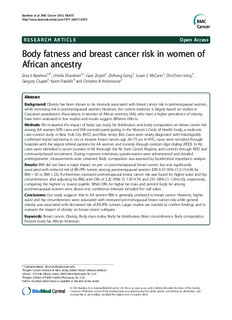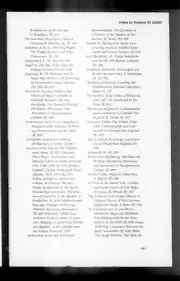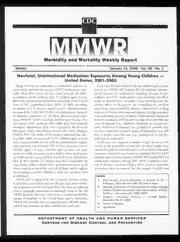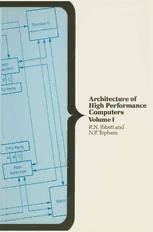
Architecture of High Performance Computers: Volume I: Uniprocessors and vector processors PDF
Preview Architecture of High Performance Computers: Volume I: Uniprocessors and vector processors
Macmillan Computer Science Series Consulting Editor Professor F. H. Sumner, University of Manchester S. T. Allworth and R. N. Zobel, Introduction to Real-timeSoftware Design, second edition Ian O. Angell and Gareth Griffith, High-resolution Computer Graphics Using FORTRAN 77 Ian O. Angell and Gareth Griffith, High-resolution Computer Graphics Using Pascal M. A. Azmoodeh, Abstract Data Types and Algorithms C. Bamford and P. Curran, Data Structures, Filesand Databases Philip Barker, Author Languagesfor CAL A. N. Barrett and A. L. Mackay, SpatialStructureandthe Microcomputer R. E. Berry, B. A. E. Meekings and M. D. Soren, A Book on C, second edition G. M. Birtwistle, Discrete Event Modelling on Simula B. G. Blundell, C. N. Daskalakis, N. A. E. Hayes and T. P. Hopkins, An Introductory Guide to Silvar Lisco and HILO Simulators B. G. Blundell and C. N. Daskalakis, Usingand Administering anApollo Network T. B. Boffey, Graph Theory in Operations Research Richard Bornat, Understanding and Writing Compilers Linda E. M. Brackenbury, Design ofVLSI Systems-A PracticalIntroduction J. K. Buckle, Software Configuration Management W. D. Burnham and A. R. Hall, Prolog Programming and Applications P. C. Capon and P. J. Jinks, Compiler Engineering UsingPascal J. C. Cluley, Interfacing to Microprocessors J. C. Cluley, Introduction to Low Level Programming for Microprocessors Robert Cole, Computer Communications, second edition Derek Coleman, A Structured Programming Approach to Data Andrew J. T. Colin, Fundamentals ofComputer Science Andrew J.T. Colin, Programming and Problem-solving in Algol68 S. M. Deen, Fundamentals ofData BaseSystems S. M. Deen, Principles and PracticeofDatabaseSystems Tim Denvir, Introduction to DiscreteMathematicsfor Software Engineering P. M. Dew and K. R. James, Introduction to Numerical Computation in Pascal M. R. M. Dunsmuir and G. J. Davies, Programming the UNIX System D. England etal., A Sun User's Guide K. C. E. Gee, Introduction to Local Area Computer Networks J. B. Gosling, Design ofArithmetic Unitsfor DigitalComputers M. G. Hartley, M. Healey and P. G. Depledge, Mini and Microcomputer Systems Roger Hutty, 280Assembly Language Programming for Students Roland N. Ibbett and Nigel P. Topham,Architecture ofHigh Performance Computers, Volume I Roland N. Ibbett and Nigel P Topham, Architecture ofHigh Performance Computers, Volume II PatrickJaulent, The 68000-Hardware and Software P.Jaulent, L. Baticle and P. Pillot, 68020-68030Microprocessors and their Coprocessors (continued overleaf) J. M. King and J. P. Pardoe, ProgramDesign UsingJSP-A Practical Introduc tion E. V. Krishnamurthy, Introductory Theory ofComputer Science V. P. Lane, SecurityofComputer BasedInformation Systems Graham Lee, From HardwaretoSoftware-an introduction to computers A. M. Lister and R. D. Eager, Fundamentals ofOperating Systems, fourth edition Tom Manns and Michael Coleman, Software Quality Assurance G. P. McKeown and V.J. Rayward-Smith, Mathematicsfor Computing Brian Meek, Fortran, PUI and theAlgols A. Meveland T. Gueguen, Smalltalk-80 Barry Morrell and Peter Whittle, CP/M 80 Programmer's Guide Derrick Morris, System Programming Based on the PDPII Y. Nishinuma and R. Espesser, Unix- Firstcontact Pim Oets, MS-DOS and PC-DOS-A PracticalGuide, secondedition Christian Queinnec, LISP E. R. Redfern, Introduction to Pascalfor Computational Mathematics Gordon Reece, Microcomputer Modelling by Finite Differences W. P. Salman, O.Tisserand and B.Toulout, FORTH L. E. Scales, Introductionto Non-linear Optimization PeterS. Sell, ExpertSystems-A PracticalIntroduction A. G. Sutcliffe, Human-Computer Interface Design Colin J. Theakerand Graham R. Brookes, A PracticalCourse on Operating Systems M. R. Tolhurst etal., Open SystemsInterconnection J-M.Trio, 8086-8088Architectureand Programming M. J. Usher, Information Theoryfor Information Technologists B. S. Walker, UnderstandingMicroprocessors PeterJ. L. Wallis, PortableProgramming Colin Walls, ProgrammingDedicatedMicroprocessors 1.R. Wilson and A. M. Addyman, A PracticalIntroduction to Pascal-with BS6192, second edition Non-series Roy Anderson, Management, Information Systems and Computers 1.O. Angell, Advanced Graphics withthe IBM Personal Computer J. E. Bingham and G.W. P. Davies, A Handbook ofSystems Analysis, second edition J. E. Bingham and G. W. P. Davies, Planningfor Data Communications B. V. Cordingley and D. Chamund, Advanced BASIC Scientific Subroutines N. Frude, A Guide to SPSS/PC+ BarryThomas,A PostScriptCookbook Architecture of High Performance Computers Volume I Uniprocessors and vector processors R. N. Ibbett and N. P. Topham Department of Computer Science University of Edinburgh M MACMILLAN ©Roland N. Ibbettand NigelP. Topham 1989 All rightsreserved. Noreproduction, copyor transmission of thispublication maybe made without written permission. No paragraphofthispublication maybe reproduced, copied or transmitted savewithwritten permission or in accordance withthe provisions ofthe Copyright Act 1956(as amended), or under the terms ofanylicencepermittinglimited copying issuedbythe Copyright LicensingAgency, 33-4 Alfred Place, London WCIE7DP. Any person who does anyunauthorised actinrelation to this publication maybeliableto criminalprosecution and civilclaimsfor damages. First published 1989 Published by MACMILLANEDUCATIONLTD Houndmills, Basingstoke, Hampshire RG21 2XS and London Companiesand representatives throughout the world British Library Cataloguing inPublication Data Ibbett, Roland N. Architecture ofhighperformance computers. --(Macmillan computer scienceseries). 1.Highperformance computersystems. Design I. Title II.Topham, NigelP. 001.64 ISBN978-0-333-46362-8 ISBN 978-1-349-19757-6 (eBook) DOI 10.1007/978-1-349-19757-6 Contents Preface viii 1 Introduction 1 1.1 Historical developments . . . . . . . . 1 1.2 Techniques for improving performance 2 1.3 An architectural design example 3 2 Instructions and Addresses 7 2.1 Three-address systems - the CDC 6600 and 7600 7 2.2 Two-address systems - the IBM System/360 and /370 10 2.3 One-address systems . . . 12 2.4 Zero-address systems . . . . . . 15 2.5 The MU5 instruction set . . . . 17 2.6 Comparing instruction formats 22 2.7 Reduced instruction sets 25 3 Storage Hierarchies 26 3.1 Store interleaving . . . . . . . . . . 26 3.2 The Atlas paging system . . . . . . 29 3.2.1 Real and virtual addresses . 30 3.2.2 Page address registers . . . 31 3.3 IBM cache stores . . . . . . . . . . 33 3.3.1 The System/360 Model 85 cache 33 3.3.2 The System/370 Model 165 cache 35 3.3.3 The 3090 cache . . 37 3.4 The MU5 Name Store . . . . . 37 3.4.1 Normal operation . . . . 38 3.4.2 Non-equivalence actions 40 3.4.3 Actions for ACC orders 43 3.4.4 Name Store performance . 43 3.5 Data transfers in the MU5 storage hierarchy. 44 3.5.1 The Exchange 44 3.5.2 The Exchange priority system . . . . . 48 VI Contents 4 Pipelines 49 4.1 Principles of pipeline concurrency . 49 4.2 The MU5 Primary Operand Unit pipeline . . 52 4.2.1 Synchronous and asynchronous timing 57 4.2.2 Variations among instruction types. 59 4.2.3 Control transfers . . . . . . . 62 4.2.4 Performance measurements . 63 4.3 Arithmetic pipelines - the TI ASC . 64 4.4 The IBM System/360 Model 91 Common Data Bus 70 5 Instruction Buffers 74 5.1 The IBM System/360 Model 195 instruction processor 74 5.1.1 Sequential instruction fetching 75 5.1.2 Conditional mode . 77 5.1.3 Loop mode . . . . . . . . . . 78 5.2 Instruction buffering in CDC computers 79 5.2.1 The CDC 6600 instruction stack 79 5.2.2 The CDC 7600 instruction stack 82 5.3 The MU5 Instruction Buffer Unit . . . . 83 5.3.1 Sequential instruction fetching . 86 5.3.2 Instruction effects in the Jump Trace. 87 5.4 The CRAY-1 instruction buffers 88 5.5 Position of the Control Point 90 6 Parallel Functional Units 96 6.1 The CDC 6600 central processor ..... 96 6.1.1 Functional units in the CDC 6600 97 6.1.2 Instruction dependencies. 99 6.1.3 Data highways . . 104 6.2 The CDC 7600 central processor . . . . . . 105 6.2.1 Functional units in the CDC 7600 . 107 6.2.2 Instruction issue .108 6.3 Performance....... . 111 7 The CRAY Series 113 7.1 The CRAY-1 . .113 7.1.1 Functional units in the CRAY-1 . 116 7.1.2 Instruction issue .119 7.1.3 Chaining .. . 121 7.1.4 Performance .. .124 7.2 The CRAY X-MP ... . 127 7.2.1 Central memory organisation . 128 7.2.2 Chaining . .131 Contents VB 7.2.3 Interprocessor communication . . 132 7.2.4 The CRAY Y-MP . . 133 7.3 The CRAY-2 . .133 7.3.1 Background Processor architecture .136 7.3.2 Interprocessor communication. . 137 7.3.3 Technology . .138 7.4 Beyond the CRAY-2 . . . 139 8 Vector Facilities in MU5 140 8.1 Introduction . .140 8.1.1 The MUS secondary instruction pipeline .142 8.1.2 Descriptor processing hardware . . 143 8.1.3 Complex descriptor mechanisms . 147 8.1.4 The Operand Buffer System . . 149 8.2 String operations in MUS . .150 8.2.1 Operation of the store-to-store orders .152 8.2.2 Special store management problems .155 9 The CDC Series 156 9.1 The CDC STAR-H)() . 156 9.2 The CDC CYBER 205 . . . . 160 9.2.1 The scalar processor . 162 9.2.2 Virtual address translation . 165 9.2.3 The vector processor . ... . 166 9.2.4 The vector floating-point pipeline . .169 9.2.5 Sparse vector operations . .172 9.2.6 Indexed list operations . .174 9.2.7 Performance .176 9.3 The ETA10 .. •• . 177 9.3.1 Technology . .179 10 Performance ofVector Machines 180 10.1 Hardware models . . 180 10.1.1 Efficiency of vector operations . 181 10.2 Measuring vector efficiency . . . 182 10.2.1 The effect oftechnology . . 183 10.2.2 Optimal pipelining . . . . . 183 10.2.3 Mixed-mode performance . 185 10.3 Comparing vector machines . 189 Bibliography 193 Index 198 Preface This second edition of The Architecture of High Performance Computers has been produced as a two volume set. Volume I is a revised, updated and slightly expanded version ofthe first edition, dealing mainly with tech niques used in uniprocessor architectures to attain high performance. Many of these techniques involve some form of parallelism, but this parallelism is largely hidden from the user. Machines which are explicitly parallel in nature are dealt with in Volume II, which concentrates on the architecture of systems in which a number of processors operate in concert to achieve high performance. The high performance structures described in Volume I are naturally applicable to the design oftheelementswithin parallelproces sors, and therefore Volume II also represents a historical progression from Volume I. Computer architecture is an extensive subject, with a large body of mostly descriptiveliterature, and any treatmentofthesubject is necessarily incomplete. There are many high performance architectures, both on the market andwithinresearchenvironments, far toomany tocoverin astudent text. We have therefore attempted to extract the fundamental principles of high performance architectures and set them in perspective with case studies. Where possible we have used commercially available machines as our examples. The two volumes of this book are designed to accompany undergraduate courses in computer architecture, and constitute a core of material presented in third andfourth year coursesin the Computer Science Department at Edinburgh University. Many people gave advice and assistance in the preparation of the first edition, particularly former colleagues at the University ofManchester, and much of this has carried over into the second edition. Computer mainte nance engineers at various sites willingly answered obscure questions about the machines in their charge, and staffat Cray Research and Control Data Corporation, particularly Chuck Purcell, vetted parts of the manuscript and provided much useful information. In preparing this first volume of the second edition the authors are indebted to William White of Cray Re search for his comments on the content of the manuscript. Preparation of the manuscriptinvolved many hours at computer terminals and the authors would like to thank Alison Fleming for her assistance and expert advice on the use of li\TEX, Roland Ibbett Nigel Topham Vill 1 Introduction Computer architecture has been defined in a number of ways by different authors. Amdahl, Blaauw and Brooks [ABB64],for example, the designers of the IBM/360 architecture, used the term to "describe the attributes of a system as seen by the programmer, i.e. the conceptual structure and functional behaviour, as distinct from the organisation of the data flowand controls, thelogicaldesign andthephysicalimplementation." Stone [St075], on the other hand, states that "the study of computer architecture is the study of the organisation and interconnection of components of computer systems." The material presented here is better described by this wider definition, but is particularly concernedwith ways inwhich the hardwareof a computer can be organised so as to maximise performance, as measured by, for example, average instruction execution time. Thus the architect of a high performance system seeks techniques whereby judicious use of increasedcost and complexity in thehardwarewillgiveasignificantincrease in overall system performance. 1.1 Historical developments Designers of the earliest computers, such as the Manchester University/ Ferranti Mark 1 (first produced commercially in 1951 [Lav75]), were con strained by the available technology (valves and Williams Tube storage, for example, with their inherent problems of heat dissipation and component reliability) to build (logically) small and relatively simple systems. Even so, the introduction of B-lines and fast hardware multiplication in the Mark 1 were significant steps in the direction of cost-effective hardware enhance ment of the basic design. At Manchester this trend was developed further in the Mercury computer, with the introduction of hardware to carry out floating-point addition and multiplication. This increased logical complex itywas made possibleby theuse ofsemiconductordiodesandthe availability of smaller and more reliable valves than those used in the Mark 1, both of which helped to reduce power consumption (and hence heat dissipation) and increase overall reliability. A further increase in reliability was made in the commercial version of Mercury (first produced in 1957) by the use of the then newly developed ferrite core store. The limitations on computer design imposed by the problems of heat dissipation and component reliability were eased dramatically in the late 1
The list of books you might like

The Spanish Love Deception

As Good as Dead

Believe Me

The Subtle Art of Not Giving a F*ck
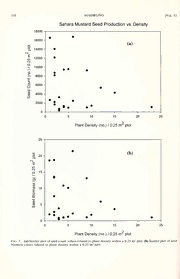
SEED PRODUCTION BY THE NON-NATIVE BRASSICA TOURNEFORTII (SAHARA MUSTARD) ALONG DESERT ROADSIDES

Investigating Psychology 2 - From Social to Cognitive

Carleson Potentials and the Reproducing Kernel Thesis for Embedding Theorems
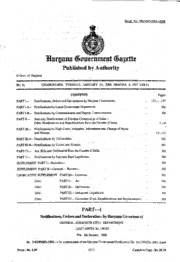
Haryana Gazette, 2006-01-04, No. 4

Understanding and Reducing Landslide Disaster Risk, Volume 4: Testing, Modeling and Risk Assessment

Electronic and Electrical Engineering: Principles and Practice
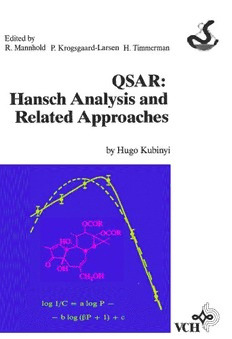
QSAR - Hansch Analysis and Related Approaches
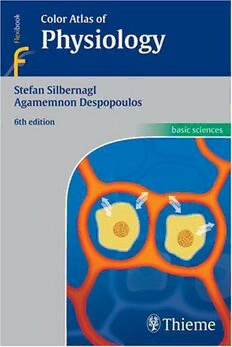
Color Atlas of Physiology

Greek Government Gazette: Part 3, 2006 no. 151
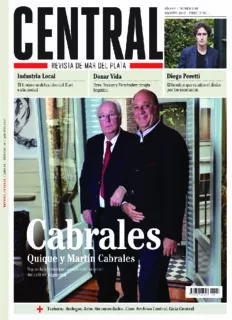
Cabrales
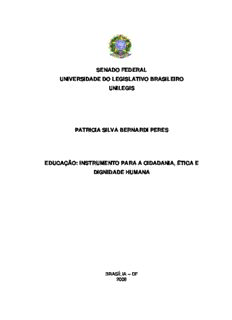
Cabe ao Estado instruir os indivíduos quanto aos

MOHELA Annual Report 2008
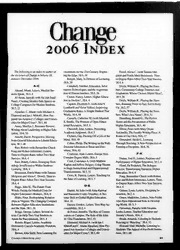
Change 2006: Vol 38 Index & Table of Contents
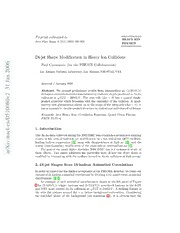
Di-jet Shape Modification in Heavy Ion Collisions

Shadow Work: Face Hidden Fears, Heal Trauma, Awaken Your Dream Life

The Rough Guide to Istanbul, 1st Edition (Rough Guide Travel Guides)
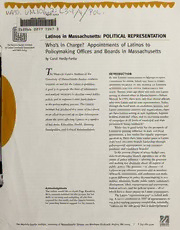
Latinos in Massachusetts
